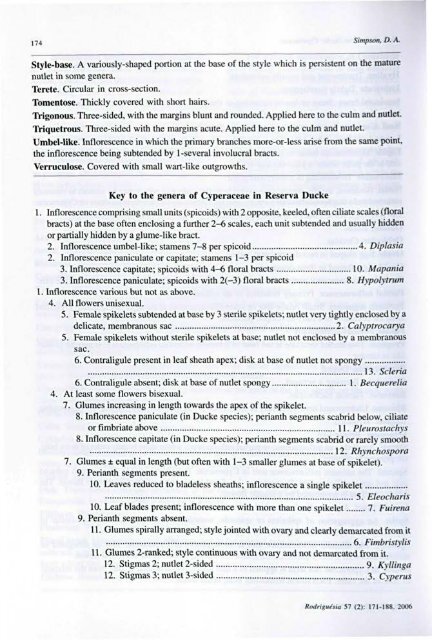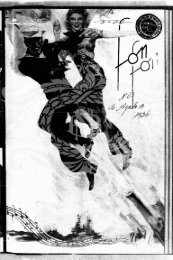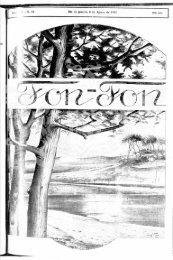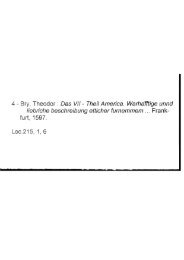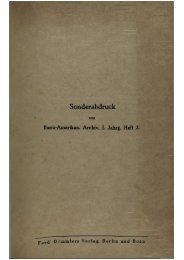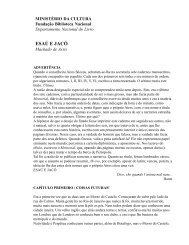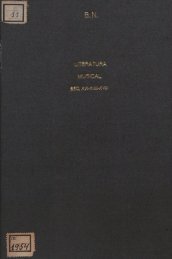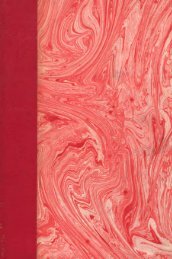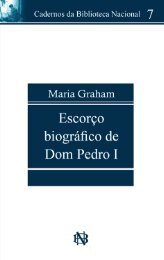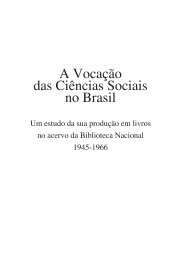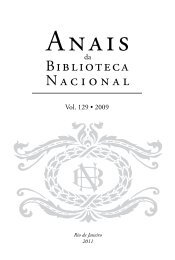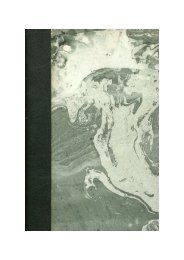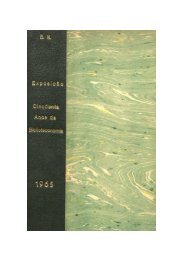RODRIGUESIA Revista do Jardim Botânico do Rio de Janeiro
RODRIGUESIA Revista do Jardim Botânico do Rio de Janeiro
RODRIGUESIA Revista do Jardim Botânico do Rio de Janeiro
Create successful ePaper yourself
Turn your PDF publications into a flip-book with our unique Google optimized e-Paper software.
]74<br />
Simpson, D. A.<br />
Style-base. A variously-shaped portion at the base of the style which is persistem on the mature<br />
nutlet in some genera.<br />
Terete. Circular in cross-section.<br />
Tomentose. Thickly covered with short hairs.<br />
Trigonous. Three-si<strong>de</strong>d, with the margins blunt and roun<strong>de</strong>d. Applied here to the culm and nutlet.<br />
Triquetrous. Three-si<strong>de</strong>d with the margins acute. Applied here to the culm and nutlet.<br />
Umbel-like. Inflorescence in which the primary branches more-or-less arise from the same point,<br />
the inflorescence being subten<strong>de</strong>d by 1-several involucral bracts.<br />
Verruculose. Covered with small wart-like outgrowths.<br />
Key to the genera of Cyperaceae in Reserva Ducke<br />
1. Inflorescence comprising small units (spicoids) with 2 opposite, keeled, often ciliate scales (floral<br />
bracts) at the base often enclosing a further 2-6 scales, each unit subten<strong>de</strong>d and usually hid<strong>de</strong>n<br />
or partially hid<strong>de</strong>n by a glume-like bract.<br />
2. Inflorescence umbel-like; stamens 7-8 per spicoid 4. Diplasia<br />
2. Inflorescence paniculate or capitate; stamens 1-3 per spicoid<br />
3. Inflorescence capitate; spicoids with 4-6 floral bracts 10. Mapania<br />
3. Inflorescence paniculate; spicoids with 2(-3) floral bracts 8. Hypolytrum<br />
1. Inflorescence various but not as above.<br />
4. Ali flowers unisexual.<br />
5. Female spikelets subten<strong>de</strong>d at base by 3 sterile spikelets; nutlet very tightly enclosed by a<br />
<strong>de</strong>licate, membranous sac 2. Calyptrocarya<br />
5. Female spikelets without sterile spikelets at base; nutlet not enclosed by a membranous<br />
sac.<br />
6. Contraligule present in leaf sheath apex; disk at base of nutlet not spongy<br />
13. Scleria<br />
6. Contraligule absent; disk at base of nutlet spongy 1. Becquerelia<br />
4. At least some flowers bisexual.<br />
7. Glumes increasing in length towards the apex of the spikelet.<br />
8. Inflorescence paniculate (in Ducke species); perianth segments scabrid below, ciliate<br />
or fimbriate above 11. Pleurostachys<br />
8. Inflorescence capitate (in Ducke species); perianth segments scabrid or rarely smooth<br />
12. Rhynchospora<br />
7. Glumes ± equal in length (but often with 1-3 smaller glumes at base of spikelet).<br />
9. Perianth segments present.<br />
10. Leaves reduced to bla<strong>de</strong>less sheaths; inflorescence a single spikelet<br />
5. Eleocharis<br />
10. Leaf bla<strong>de</strong>s present; inflorescence with more than one spikelet 7. Fuirena<br />
9. Perianth segments absent.<br />
11. Glumes spirally arranged; style jointed with ovary and clearly <strong>de</strong>marcated from it<br />
6. Fimbristylis<br />
11. Glumes 2-ranked; style continuous with ovary and not <strong>de</strong>marcated from it.<br />
12. Stigmas 2; nutlet 2-si<strong>de</strong>d 9. Kxllinga<br />
12. Stigmas 3; nutlet 3-si<strong>de</strong>d 3. Cxperus<br />
Rodriguésia 57 (2): 171-188. 2006


